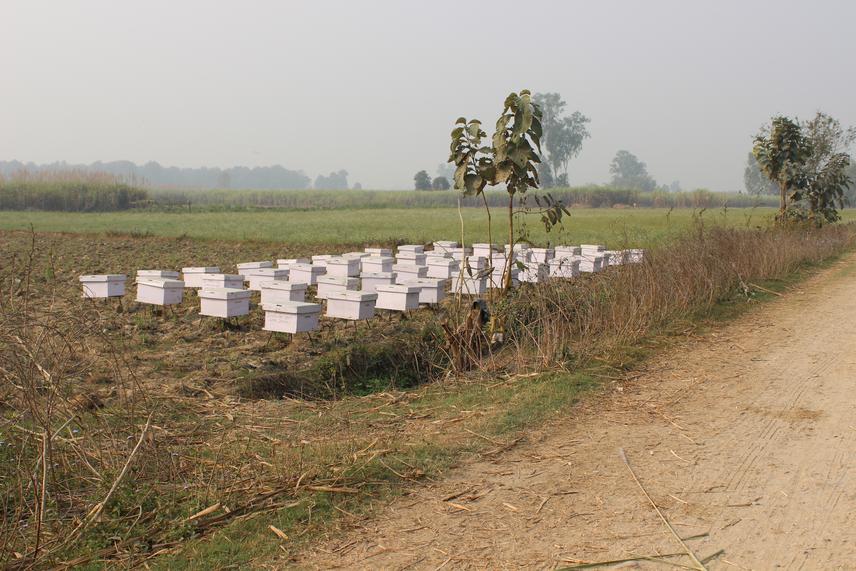Roshan Kumar Thakur
Other projects
10 Apr 2015
Geospatial Modelling of Walk Trails of Asian Elephant as a Tool for Mitigating Human Elephant Conflicts in Central Nepal
17 Sep 2018
Living with Giants: Addressing the Prequels of Elephant Conservation in Central Nepal
11 Nov 2024
Living with Giants: Phase II. Harmony in the Wild i.e., Sustainable Conservation Action in Nepal
More than dozen studies in Africa witness the presence of strong correlation between these majestic creature and honey bee as elephants always avoided honey bees in the wild. Evidences from Asian countries also support the theory as this idea for HEC (Human Elephant Conflict) mitigation, has been widely practiced in Asia also. Here I present to study the effectiveness and efficiency of using honeybees as eco-deterrent to mitigate elephant crop depredation which will result in decrement of HEC incidents and increase of tolerance level among farmers ensuring harmony living and better conservation of Asian Elephant in Central Nepal.

Mitigation of Human Elephant Conflict (HEC) has been a challenging issue for elephant conservation. Various deterring methods viz. electric fence, chili bombs, firecrackers, crop raiding deterrence groups, chili and tobacco cultivation, honey bee fence method etc. has been well practiced over the world. Vollrath 2002, and King et. al. 2007; King et. al 2009; King et. al 2010 has proved that honey bee can be used as eco-deterrent for crop raiding African elephants . The bee sting familiarity helps to avoid the places where there is bee hives. Various vulnerable orifices are trunks, ears, behind the ears, under body although elephant skin is impervious skin, baby elephant can potentially be stung to death by a swarm of honey bees. If the crop can be fenced with bee hives then it can deter elephants from damaging fields of crops. By building a bee hive fence with wire inter-connecting as a grid, such that any disturbance shaking the wire, lets out angry bees to attack the intruder will help to lower the HEC as well as the protect crops. Also famers can harvest and sell honey which will support their livelihood. With bio-fence, farmers can safely plant their crops and harvest their products.
This project idea is using honey bee as eco-deterrent for crop raiding elephants in central Nepal.
Here I will study the effectiveness and efficiency of using honeybees as eco-deterrent to mitigate elephant crop depredation which will result in decrement of HEC incidents and increase of tolerance level among farmers ensuring harmony living and better.
Using Type 2 field trials method Franzel et. al. 2002, King et. al. 2010 for experiment and RRA Framework for surveys and socio-economic status; focus group discussions, I plan to execute this project. There is no involvement of human directly seen by elephant so elephant will not have trauma from human. Also human will not treat elephant as pest because they and their crops will be saved from bee.
Besides main objectives, unseen output will be increased production through both reduced damage and increased bee pollination of crops; additional income through the sale of honey and bee products; increased quality of life with greater income and less life threating HEC conflict situations with elephants. In this project, all three component i.e. conservationist, elephant and farmers wins so I believe this project will increase the tolerance level to live with elephants.